In the previous article I had explained how hackers can apply replay attack to enter into car without key. In this article I will discuss what the different types of hardware hacking tools are used by hackers or what are the contents of hackers backpack. This article will be helpful for all peoples, including students who are willing to learn hacking.
Disclaimer: This article is only for the education purpose. It doesn’t encourage any illegal activities.
This article will try to provide information about most of the hardware tools used by hackers to hack into the computer and networking devices including RFID, radio signals, Bluetooth, and mobile network.
USB Rubber Duckey: The USB Rubber Duckey is a powerful hacking tool used by security professionals, hackers and penetration testers but it looks like a regular USB flash drive. To a human it’s a USB drive but for a computer it’s a keyboard. It is used to automate keystrokes and execute commands on a computer bypassing security measures such as passwords and firewalls.
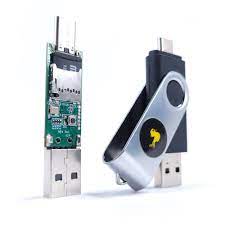
Bash Bunny: The Bash Bunny is a powerful, small, portable hacking device used by security researchers and penetration testers look like a standard USB flash drive but can be used to perform a variety of automated attacks on a target computer or network, such as spreading malware, stealing passwords, and harvesting data. It is highly programmable; users can create scripts in a Python, PowerShell or Bash.
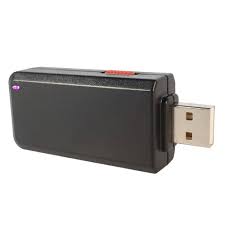
OMG Cable: The O.MG Cable is similar to USB cable with an advanced implant hidden inside. It is used to emulate attack scenarios of sophisticated adversaries and hacks iPhones, iPads, Samsung tablets, Android devices, and computers to give third-party users remote access to all of the sensitive data stored on your device. These cables will allow you to test new detection opportunities for your defense teams. It can access your data remotely when connected to your computer. This cable The OMG cable looks exactly like any other USB cable, but when you plug it into your computer or phone, it lets a potential hacker control your data remotely.

The another hacking tool “OMG Keylogger Cable”, which acts as a secret keylogger hacking tool. Hackers use this cable to replace detachable keyboards cables and steal login details and other sensitive information by collecting keystrokes.
Shark Jack: Shark Jack: The Shark Jack is a portable network attack and automation tool for pentesters and systems administrators designed to enable social engineering engagements, opportunistic wired network auditing and network assessments tool. It is a versatile tool that can be used to perform password cracking, remote access and network reconnaissance.
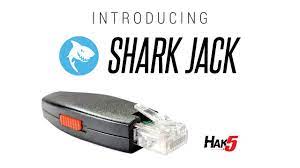
Packet Squirrel: Packet Squirrel by Hak5 is a stealthy pocket-sized man-in-the-middle. The Packet Squirrel commonly used by security professionals and ethical hackers to test the security of networks and devices. It is an Ethernet multi-tool designed to give you painless packet captures, secure VPN connections and covert remote access with the flip of a switch. The Packet Squirrel can capture and analyze network traffic passing through it, allowing security professionals to identify vulnerabilities and potential threats. The Packet Squirrel is also capable of performing a range of other functions, such as network monitoring, data logging, and device enumeration. It can be controlled through a web interface, making it easy to configure and use.
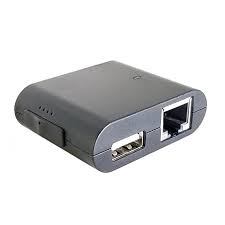
Proxmark: Proxmark is a small, open-source software and hardware platform used for RFID (Radio Frequency Identification) exploring and attacking RFID-based systems, cracking access control mechanisms, brute-forcing encryption keys, research and development. It is also capable of emulating various types of RFID cards, analyzing the contents of RFID cards, modifying, reading, and cloning RFID cards. It is portable, highly versatile and can be used for a variety of applications, including transportation systems, electronic payment systems, and physical access control systems.
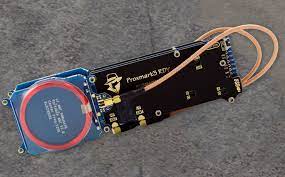
LAN Turtle: The LAN Turtle is a highly portable and easy to use covert Systems Administration and Penetration Testing tool providing stealth remote access, network intelligence gathering, and man-in-the-middle surveillance capabilities through a simple graphic shell. Housed within a generic “USB Ethernet Adapter” case, the LAN Turtle’s covert appearance allows it to blend into many IT environments and can be plugged into a target computer or network device to intercept and manipulate network traffic, remote access, data exfiltration, and network reconnaissance.
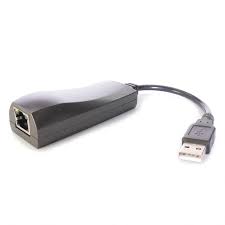
Ubertooth: Ubertooth is based on a USB dongle and it is an open-source Bluetooth development platform used by security professionals, developers, and researchers for identifying vulnerabilities in Bluetooth implementations and devices. It is used to develop and analyze Bluetooth enabled devices and applications. Ubertooth can decode data between Bluetooth devices, capture packets, and monitor traffic. It can also inject arbitrary packets into the Bluetooth protocol stack, enabling testing and development of new Bluetooth applications and protocols.
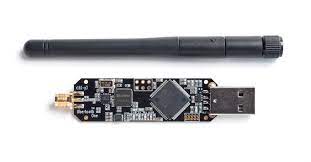
HackRF One: HackRF is a wide band software defined radio (SDR) half-duplex transceiver created and manufactured by Great Scott Gadgets.HackRF is great choice for beginners looking for an inexpensive Software Defined Radio (SDR) hardware that can both transmit and receive. HackRF is all open-source including its schematic diagram, PCB diagram, driver code, and single chip firmware. HackRF supports frequencies from 1MHz- 6Ghz. HackRF is only capable of transmitting and receiving at half-duplex, a major drawback for high performance systems.
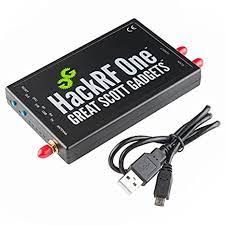
Alfa Network Adapter: Alfa Network Adapter is a reliable, high-performance wireless network adapter for various applications, including gaming, streaming, and remote work. It is manufactured by Alfa Network Inc. designed to allow a computer to connect to a wireless network, either by receiving or transmitting wireless signals. Alfa Network Adapters typically use a USB connection to plug into a computer, and they support various wireless protocols, including 802.11n, 802.11ac, and 802.11ax. Alfa Network Adapters are known for their high power and range capabilities, making them popular among users who need to connect to wireless networks over long distances or in areas with weak signals.
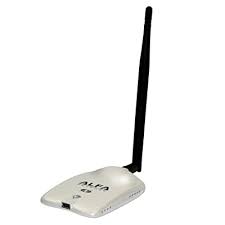
Flipper Zero: Flipper Zero is a multi-functional, unique, versatile and powerful tool for hardware and software hacking, as well as a educational and fun platform for playing retro games and exploring electronics. Flipper Zero features a built-in display, a radio frequency signal analyzer and generator, an infrared transmitter and receiver, a magnetic stripe card reader and writer, and various other sensors and components. It also includes a battery and can be charged via USB. One of the main features of Flipper Zero is its support for multiple communication protocols, including Wi-Fi, Bluetooth, NFC, and RFID. This allows users to interact with a wide range of devices and systems, from smart home devices to contactless payment systems. Flipper Zero also includes a suite of tools for hacking and reverse engineering, as well as a programming environment for creating custom applications and games. The device runs on an open-source firmware and supports a range of programming languages, including Python and C++.

WiFi Pineapple: WiFi Pineapple is a powerful wireless security testing, auditing and penetration testing tool developed by Hak5 LLC. It is designed to simulate a wireless access point and intercept traffic from other devices, allowing security professionals and enthusiasts to test the security of wireless networks and devices. The WiFi Pineapple works by creating a fake wireless access point (AP) that appears to be legitimate to other devices. When other devices connect to the fake AP, the WiFi Pineapple intercepts and logs their network traffic, including login credentials, passwords, and other sensitive information. This information can then be analyzed and used to identify security vulnerabilities and potential attack vectors. The WiFi Pineapple is highly customizable and supports a range of plugins and modules that can be used to extend its functionality. Some of these plugins include tools for man-in-the-middle attacks, DNS spoofing, and packet injection. The device also supports a range of wireless protocols, including 802.11a/b/g/n/ac.
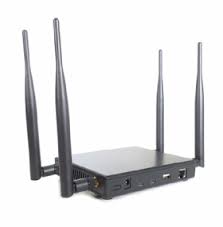
Femtocell: A Femtocell is a small, low-power cellular base station that is designed to provide indoor coverage for mobile devices. It is typically used in areas where the signal strength from a regular cellular tower is weak, such as inside buildings or in rural areas. Femtocells work by connecting to a user’s broadband internet connection, and then using that connection to create a small cell site inside the user’s home or office. When a mobile device connects to the Femtocell, the signal is transmitted over the internet to the user’s mobile carrier, which then routes the call or data traffic to its destination. One of the main advantages of Femtocells is that they can provide better signal strength and call quality than traditional cellular networks, particularly in areas with weak coverage. They can also help reduce the load on traditional cellular networks, since calls and data traffic are routed over the internet rather than over the carrier’s network.
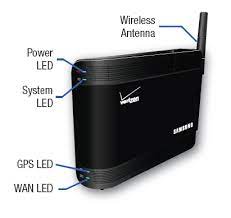
KeyCroc (Key Logger): The Hak5 KeyCroc is a versatile, small, powerful and programmable, USB keystroke injection tool designed for use in security assessments and penetration testing. It is a compact and stealthy device that appears as a standard USB keyboard to a computer, but can be programmed to execute a wide range of keystroke injection attacks. The KeyCroc is compatible with a wide range of operating systems, including Windows, macOS, and Linux, and can be used with any device that supports USB keyboards. The KeyCroc is preloaded with several attack payloads, such as keystroke loggers, network reconnaissance tools, and password grabbers, which can be easily customized and executed by the user. One of the main features of the KeyCroc is its ability to bypass security measures, such as antivirus software and firewalls, by emulating the actions of a human user rather than running malicious code. It also supports the creation of custom payloads using programming languages such as Python, allowing for greater flexibility and customization.
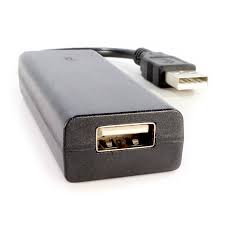
Plunder Bug: The Plunder Bug is a small, portable network interception device that can be connected to a target computer or device to intercept and analyze its network traffic for various purposes, such as troubleshooting, monitoring, or network testing. The Plunder Bug can capture and analyze network traffic, including website URLs, passwords, and other sensitive information that is transmitted over the network. It is compatible with a wide range of devices and operating systems, including Windows, macOS, and Linux.
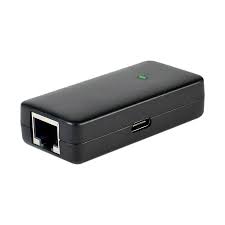
ScreenCrab: The Screen Crab by Hak5 is a stealthy video man-in-the-middle implant allowing for capture and exfiltration of HDMI data – as screenshots, video, or even streaming. This covert inline screen grabber sits between HDMI devices – like a computer and monitor, or console and television – to quietly capture screenshots. Perfect for sysadmins, pentesters and anyone wanting to record what’s on a screen.
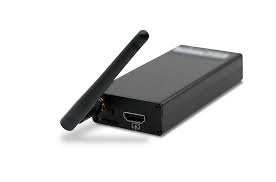
Hak5 Field Kit: Essentials Field Kit includes the most popular tool for each category – from WiFi assessments to hotplug attacks and on-site implants – plus the field guide books to hit the ground running From WiFi assessments to hotplug attacks and on-site implants, this kit has it covered – all neatly packed in our signature Hak5 equipment organizer. Includes: WiFi Pineapple Mark VII, USB Rubber Ducky Shark Jack, LAN Turtle SD etc.

Raspberry Pi: Raspberry Pi is a powerful and versatile tool and can be used as security testing tools, including vulnerability assessments, network scanning, and exploitation frameworks. It can identify potential vulnerabilities, monitor network traffic, and detect security threats in a network. Raspberry Pi can be used as a remote access tool to gain access to remote networks, systems, and devices. Raspberry Pi can be used as a privacy tool to hide the user’s identity by running various privacy tools, such as TOR or a VPN. Raspberry Pi can be used to create custom hacking tools or devices, such as a wireless network sniffer, a keystroke logger, or a portable hacking tool.

Mobile (Rooted): Rooting is the process of unlocking or jailbreaking a device, such as a smartphone or tablet. A rooted device gives the user much more freedom to customize the device and achieve more administrative control. Rooted mobile devices can be used as vulnerability testing tool to test the security of mobile applications and the underlying operating system by allowing researchers to bypass security restrictions and analyze system processes. Rooted mobile devices can be used to capture network traffic and analyze network protocols, which can be useful in identifying security vulnerabilities and detecting malicious activity. Rooted mobile devices can be used to test the security of mobile networks and devices by simulating attacks against the network or devices. Rooted mobile devices can be used to analyze malware and other malicious software, allowing researchers to identify the behavior of the malware and the techniques it uses to evade detection.
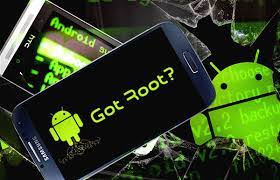
C to micro adapter: A C to Micro USB adapter is a small device that allows a USB Type-C cable to connect to a device with a Micro USB port. It is versatile connector that supports faster data transfer rates and higher power output compared to Micro USB. A C to Micro USB adapter allows devices with USB Type-C ports, such as smartphones, laptops, or tablets, to connect to devices with Micro USB ports, such as external hard drives, cameras, or older smartphones. The adapter typically has a USB Type-C male connector on one end and a Micro USB female connector on the other end.
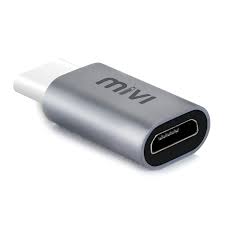
Ethernet essential kit: Connect USB 2.0 devices to Fast Ethernet 10/100 Mbps networks with this USB Ethernet adapter and retractable Ethernet cable combo. Features the popular ASIX AX88772B chipset for high compatibility with Windows, Mac OS X, Linux and Android hosts. It also consists of expandable Ethernet cable.
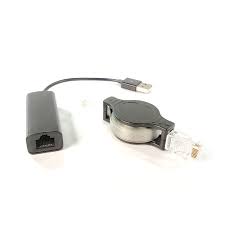
The Ethernet Cable, also known as the Elite Tactical Ethernet Adapter looks like a regular Ethernet cable is a specialized network cable created by Hak5 is designed to provide a convenient and secure way to analyze and access network traffic during penetration testing and security assessments. It has a built-in Ethernet adapter to connect directly to a computer or other device without the need for a separate adapter and built-in microcontroller that can be programmed to perform various network-related tasks, such as conducting man-in-the-middle attacks, spoofing MAC addresses, or monitoring network traffic.
USB Hub: A USB hub is a device that allows multiple USB peripherals to be connected to a single USB port on a computer or other device. A typical USB hub has one upstream port for connecting to a computer and multiple downstream ports for connecting USB devices, such as printers, external hard drives, keyboards, mice, and other peripherals. Some hubs have additional features, such as Ethernet ports, audio jacks, or card readers that can provide additional functionality.
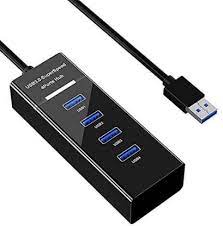
iCopy-X: ICopy-X is a portable device specialized in the rapid cloning of RFID badges, capable of automatically reading, cracking and writing the vast majority of Low Frequency (125KHz / 134KHz) and High Frequency (13.56MHz) RFID tags on the market. 100% portable and pocket-sized, the iCopy-X is built with simplicity in mind. No cables required, no external computers or antennas. With its built in battery, you just pull the device out of your pocket, and you’re ready to go. The functionalities of iCopy-X are badge information, Read / Write, Auto-Clone, and sniffing.
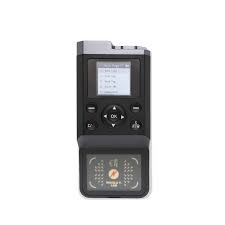
USB-C micro SD card reader: A USB-C micro SD card reader is a small device that allows users to read and write data on micro SD cards using a USB Type-C port. The micro SD card reader typically has a USB Type-C connector on one end and a micro SD card slot on the other end. The USB-C micro SD card reader can be used to transfer data, such as photos, videos, and documents, between a device with a USB Type-C port, such as a laptop or smartphone, and a micro SD card. This can be useful for users who need to quickly transfer data between their devices without using a cable or adapter.
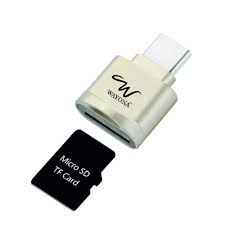
Oscilloscope Waveform Generator Digital Multimeter: Hantek 2D72 3 in 1 Dual Channel Oscilloscope Waveform Generator Digital Multi-meter USB Portable 70Mhz Tester Kit. Portable: -Oscilloscope which is not only portable but also handheld. New light weight design which meets your different needs in one device.
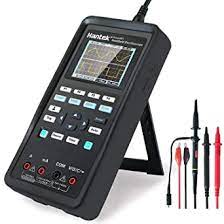
iFixit Pro Tech Toolkit: At the heart of the toolkit, 64 steel screwdriver bits to service all your tech. The Pro Tech Toolkit has everything from a Y000 bit for next-gen Apple products to the Gamebit for vintage game consoles.

USB boot disk: It provides an alternative way to repair, recover, or install an operating system. The hacker can have bootable USB disk of popular OS like Kali Linux, Parrot OS, Windows, Ubuntu, Red Hat etc.
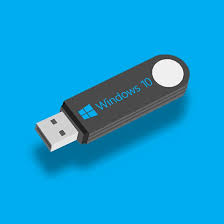
GLiNet MUDI: Mudi by GL.iNet, is the best portable 4G LTE privacy router for road warriors and business travelers who want to secure their data and protect them from cyber criminals. With WireGuard setting, Mudi gives the privacy-minded users a fast and simple VPN that utilizes state-of-the-art cryptography.
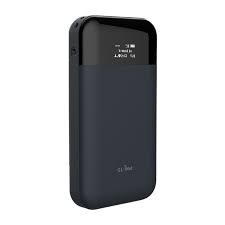
Conclusions
In this article I, discussed different types of devices used by hackers to hack into computer and networking devices including Radio frequencies, SDR (Software Defined Radio) devices, Drones, Wi-Fi devices, Airplanes, NFC devices, Bluetooth devices, RFID etc. The Hackers backpack may contains Folding Keyboard, Arc Wedge Mouse, Logitec MX master mouse, Sabrent 2TB SSD in TBDT enclosure, Swiss Army Knife, SwitchBlade (Generic Flea Market), Spyderco Tenacious folding knife, Herschel RFID Blocking wallet, Smartwatch (Fossil Explorist), TS100 soldering iron, Leatherman Wave (Black edition), PowerCore+ charger, various USB adapters like USB -C to USB -A , Micro USB cable, USB B-C cable, Diary, pen, Multicolor pen, Marker, Mechanical pencil, Standard bump keys, Generic assortment of various lockpicks, Generic pick gun, SOM WH100XM3 Bluetooth headphone, Smith lock 3-piece 7 pin tubular lock picks, Hotspot, Apple airpods (Gen 2) etc.
